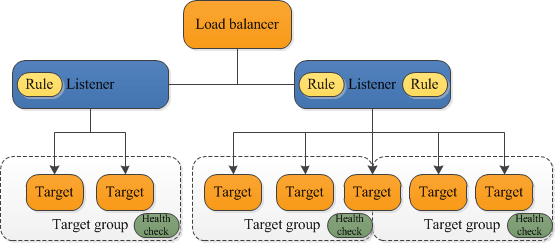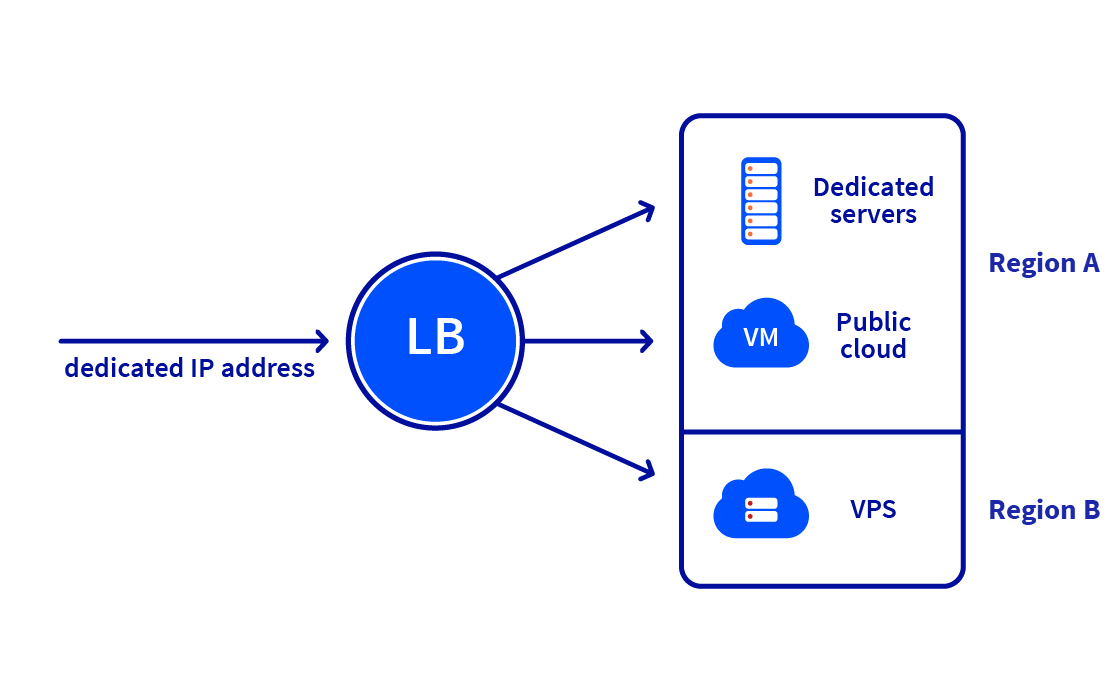
- Introduction
- How Load Balancing Works in Cloud Environments
- Types of Load Balancing Algorithms
- Benefits of Load Balancing in Cloud Computing
- Challenges in Load Balancing and How to Overcome Them
- Best Practices for Implementing Load Balancing in Cloud Computing
- Conclusion
In today’s cloud-driven world, where applications and services operate dynamically and cater to a global audience, load balancing has become an essential component of infrastructure management. Cloud Computing Course involves distributing incoming network traffic across multiple servers or computing resources to prevent overload on any single system. By optimizing resource allocation, load balancing enhances application performance, ensures high availability, and maintains system reliability. As businesses increasingly adopt cloud solutions with scalable architectures, efficient resource management becomes a critical priority. Load balancing plays a crucial role in maintaining service continuity, improving response times, and providing a seamless user experience. It ensures that workloads are evenly distributed, preventing bottlenecks and system failures. This article delves into the fundamentals of load balancing in cloud computing, exploring different techniques, key advantages, potential challenges, and best practices for achieving a resilient and efficient cloud infrastructure.
Become a Cloud Computing expert by enrolling in this Cloud Computing Online Course today.
Introduction
In the modern cloud computing landscape, where applications and services are increasingly dynamic and accessed globally, load balancing has become a critical component of infrastructure management. Load balancing refers to the practice of distributing incoming network traffic across multiple servers or resources to ensure no single server is overwhelmed. This ensures high availability, reliability, and optimal performance for Understanding The Cloud Native Applications hosted in the cloud. As organizations move towards cloud services, especially with scalable infrastructure, the need to manage resources efficiently becomes paramount. Load balancing provides an effective solution for distributing workloads, enhancing user experience, and maximizing resource utilization. In this article, we will explore the concept of load balancing in cloud computing, its various techniques, benefits, challenges, and best practices.
How Load Balancing Works in Cloud Environments
In cloud environments, load balancing involves using specialized software or hardware to distribute application or network traffic across multiple servers or instances. The key to effective load balancing is its ability to manage resource allocation, ensure high availability, and maintain performance consistency. Request Distribution Load balancers receive client requests, typically for web services, and determine which server or instance in the backend will process them. The distribution mechanism can be based on various factors, such as round-robin, least connections, or resource utilization. Health Monitoring One critical feature of load balancing is health monitoring. Load balancers continuously monitor the health and performance of backend Server Less Computing Benefits use Cases to ensure that Traffic is routed only to healthy servers. If a server is down or overloaded, the load balancer automatically reroutes the Traffic to other available servers. Session Persistence (Sticky Sessions) Some applications require session persistence, which ensures that once a client is connected to a particular server, all subsequent requests from the same client are directed to the same server.
Enhance your knowledge in Cloud Computing. Join this Cloud Computing Online Course now.
This is crucial for applications that store session-related data on the server side. Scaling Up or Down Cloud environments provide the flexibility of auto-scaling, which allows additional servers or resources to be provisioned automatically based on demand. Load balancers distribute Traffic across these newly provisioned servers, maintaining the optimal user experience. Global Load Balancing In a global cloud architecture, multiple data centers across different geographic locations may host different instances of an application. A global load balancer directs Traffic to the nearest data center based on factors like proximity, latency, or geographic location to ensure minimal latency and better performance.
Types of Load Balancing Algorithms
Load balancing algorithms are techniques used by load balancers to distribute Traffic among available servers. The choice of algorithm impacts the efficiency of traffic distribution and overall system performance.
- Round Robin: One of the simplest and most widely used load-balancing algorithms is round-robin. In this method, the load balancer sends incoming requests to each server in a circular order. Once all servers have received a request, the cycle starts over. This algorithm is best suited for situations where all servers have similar capabilities.
- Least Connections: The least connections algorithm directs Traffic to the server with the fewest active connections. This ensures that no server becomes overloaded while others are underutilized. Docker Swarm is particularly effective when there are servers with varying levels of processing capacity.
- IP Hashing: IP Hashing uses the client’s IP address to determine which server should handle the request. A hash function is applied to the IP address to produce a unique value that maps to a specific server. This method is often used when session persistence is required.
- Weighted Round Robin: The weighted round-robin algorithm is an extension of the basic round-robin approach. In this method, each server is assigned a weight based on its capacity, and the load balancer directs Traffic proportionally. Servers with higher weights receive more Traffic than those with lower weights, making it ideal for scenarios where servers have varying resource capabilities.
- Random: The random algorithm selects a server randomly to handle the request. While this method is simple, it does not consider the load or health of the servers, so it may not always provide optimal performance.
- Least Response Time: This algorithm routes Traffic to the server with the lowest response time, ensuring that clients experience minimal latency. It is especially useful for applications with high transaction rates or those that need quick response times.
Looking to master Cloud Computing? Sign up for ACTE’s Cloud Computing Master Program Training Course and begin your journey today!
Benefits of Load Balancing in Cloud Computing
Load balancing in cloud computing offers numerous advantages that make it a critical component in modern infrastructure management. Below are some of the key benefits Improved Availability and Reliability One of the primary benefits of load balancing is its ability to improve application availability and reliability. By distributing Traffic across multiple servers, load balancers ensure that if one server fails, others can take over the Traffic, minimizing downtime and providing continuous service delivery. Scalability Cloud computing environments are inherently scalable. Load balancers enable seamless scaling by dynamically distributing Traffic across an increasing number of servers. When there is a sudden surge in Traffic, additional resources can be provisioned, and the load balancer will handle the distribution of Traffic to new servers without affecting user experience. Efficient Resource Utilization Load balancing ensures optimal resource utilization by evenly distributing Traffic across servers. This prevents situations where some servers are underutilized while others are overloaded, improving overall system efficiency and resource management. Enhanced Performance Load balancing helps reduce response time by directing Traffic to the least busy server or the one with the fastest response time. Cloud Computing Course results in faster load times and a better user experience, especially for applications that require high-performance computing resources. Disaster Recovery In the event of a server or data center failure, load balancing facilitates quick disaster recovery by rerouting Traffic to backup servers or alternate data centers. This helps maintain business continuity and reduces the impact of failures on end users. Cost Efficiency Load balancing allows organizations to make better use of their existing infrastructure, which can lead to cost savings. By optimizing resource allocation, load balancers reduce the need for over-provisioning and minimize operational costs.

Challenges in Load Balancing and How to Overcome Them
While load balancing offers numerous benefits, it also comes with certain challenges. Addressing these challenges is essential for ensuring the efficient operation of Applications of Cloud Computing.
- Session Persistence: Load balancing can be more complex for applications that require session persistence (sticky sessions). In cloud environments, ensuring that a user consistently connects to the same server can be challenging, especially when servers are added or removed dynamically. Solutions like session affinity and cookie-based persistence can be implemented to overcome this issue.
- Handling Variable Traffic Loads: Traffic patterns in cloud applications can fluctuate significantly. Load balancing must be capable of dynamically adjusting to changes in traffic volumes, ensuring that resources are allocated efficiently. Auto-scaling and intelligent load-balancing algorithms can help tackle this challenge.
- Latency and Performance Overhead: Load balancing introduces an additional layer in the request-response cycle, which can add some latency. The overhead introduced by load balancing should be minimal, but in high-performance applications, it may become noticeable. To mitigate this, organizations should opt for highly efficient load balancers and monitor their performance regularly.
- Security Concerns: If not configured correctly, load balancers can become targets for security breaches. Ensuring that load balancers are properly secured with encryption, access control, and monitoring is essential to protecting cloud environments from attacks.
- Multi-Cloud Load Balancing: As organizations move towards multi-cloud environments, managing load balancing across multiple cloud platforms becomes more complex. Implementing a global load-balancing solution with cross-cloud capabilities is essential to ensure seamless traffic distribution and performance.
- Monitoring and Troubleshooting: Monitoring load balancer performance and troubleshooting issues can be challenging, especially in complex cloud environments. Cloud-based monitoring tools and analytics can help identify bottlenecks and potential issues in the load-balancing process, ensuring smooth operation.
Boost your chances in Cloud Computing interviews by checking out our blog on Cloud Computing Interview Questions and Answers!
Best Practices for Implementing Load Balancing in Cloud Computing

To ensure optimal performance and reliability, organizations should follow best practices when implementing load balancing in cloud computing environments Automate Scaling and Load Balancing Leverage auto-scaling features in cloud environments to dynamically adjust the number of servers or resources based on traffic demand. Combine this with load balancing to ensure seamless traffic distribution as resources scale up or down. Implement Health Checks Regular health checks should be implemented to monitor the status of backend servers. This ensures that Traffic is only routed to healthy servers, preventing issues like downtime or poor performance. Use a Global Load Balancer For global applications, use a global load balancer to distribute Traffic to the nearest or most available Data Analytics with Azure Stream. This minimizes latency and ensures high availability across regions. Optimize Load Balancer Configuration Choose the right load-balancing algorithm based on the application’s needs. Fine-tune the configuration for session persistence, traffic distribution, and failover handling to ensure optimal performance. Secure Load Balancers Implement encryption, access controls, and firewalls to protect load balancers from security threats. Then, regularly update and patch load balancers to protect against vulnerabilities. Monitor and Analyze Traffic Continuously monitor load balancers’ and traffic distribution processes’ performance. Use analytics tools to identify traffic patterns, detect issues, and optimize load-balancing strategies.
Conclusion
Load balancing is a cornerstone of modern cloud computing, enabling organizations to deliver high-performing, reliable, and scalable applications. By distributing Traffic across multiple servers, load balancing ensures that resources are used efficiently, downtime is minimized, and user experience is optimized. Whether you are dealing with traffic spikes, managing resource utilization, or ensuring high availability, implementing an effective load-balancing strategy is essential for success in the Cloud Computing Course. By understanding the different types of load-balancing algorithms, the benefits they provide, and the challenges they pose, organizations can leverage load-balancing to its full potential. Proper configuration, monitoring, and adherence to best practices are essential to achieving optimal performance and ensuring a seamless experience for users worldwide.





